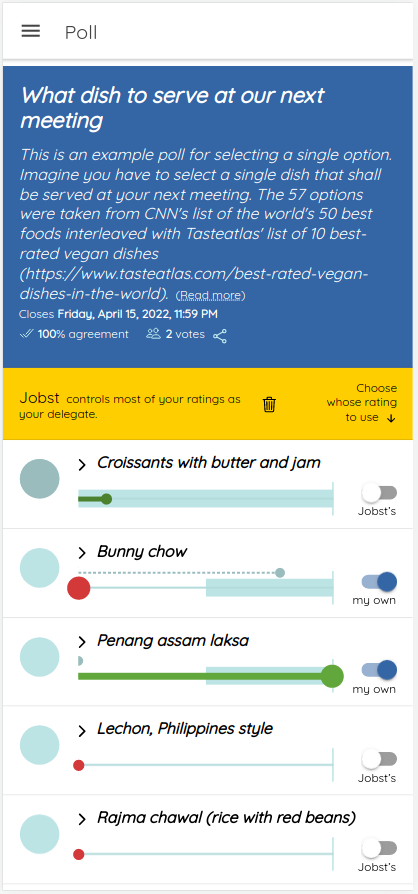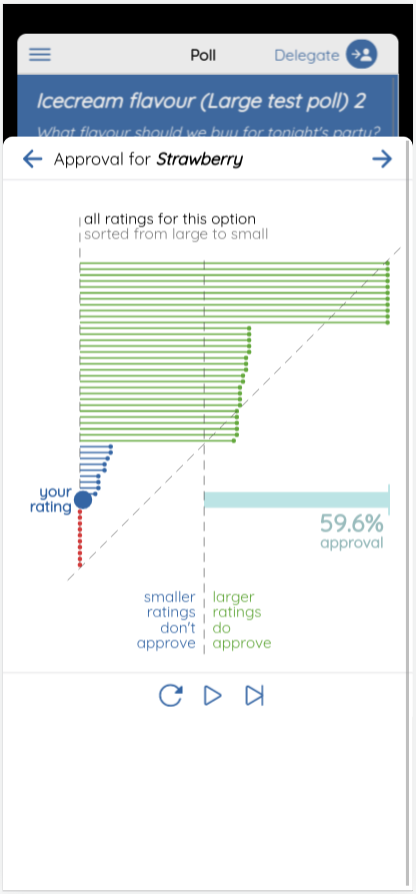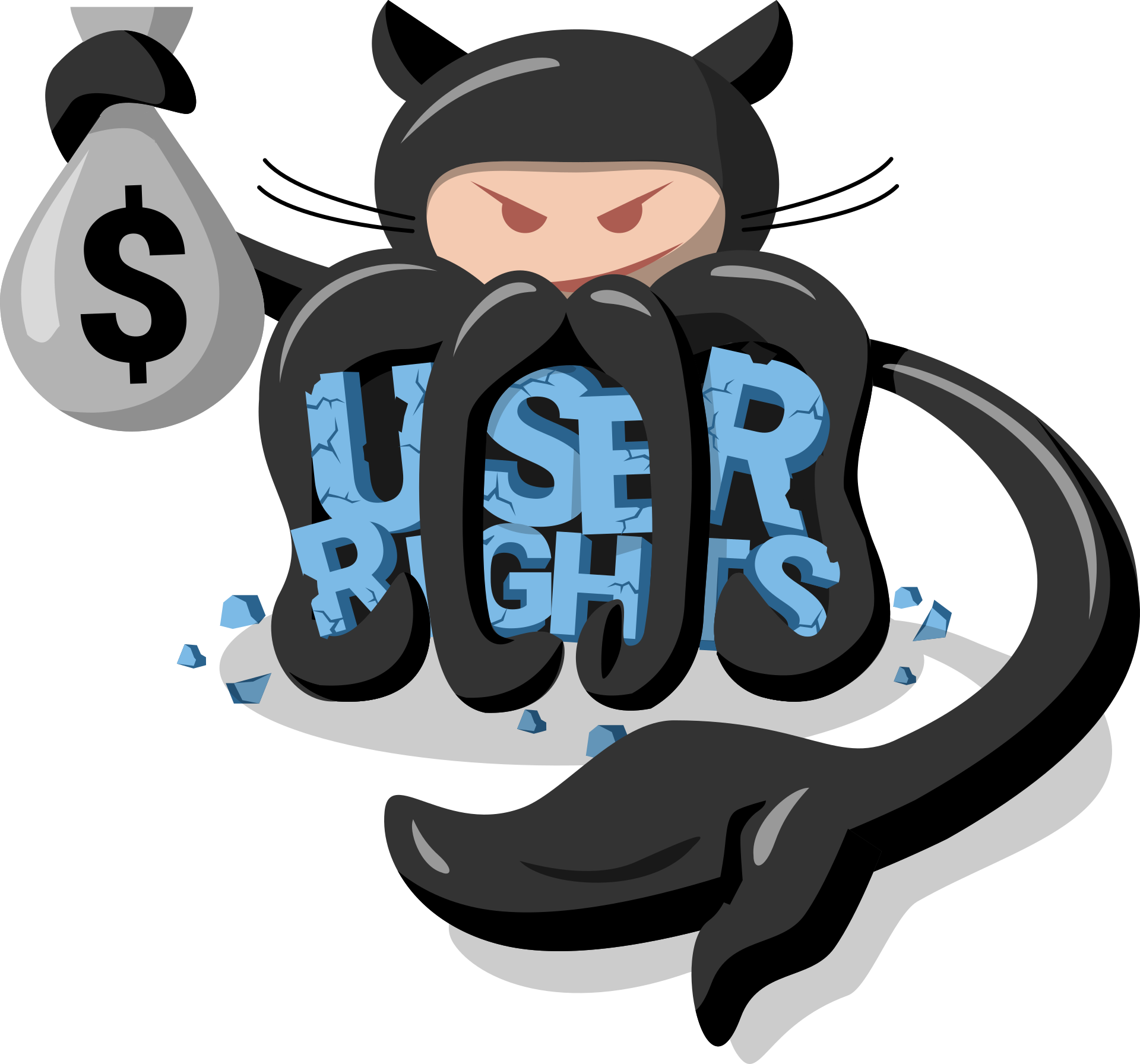We are on our way towards a First Stable Release (want to help?).
-
A Minimal Viable Product (MVP) is finished since end of June '22 and can be tried out online at app.vodle.it.
--> Are you in a group of people that would be willing to try vodle with our support, to enable us to improve it further?
-
For now, we will use the MVP as a demonstrator to win contributors and testers, and to identify missing features for the First Stable Release (V1.0).
A few of them also here:
vodle is developed by the FutureLab on Game Theory and Networks of Interacting Agents at the Potsdam Institute for Climate Impact Research, with contributions from the open-source community.
It is both Freeware (comes at no monetary cost) and FOSS/FLOSS (free/libre open-source software).
(Pronounciation: vəʊdl, as in vote, node, rode, total, yodel and zodiac, not as in model or noodle)
Vodle will help groups make better decisions – fairer, more efficient, more consensus-oriented, interactive, and for free. Its underlying algorithm is based on thorough science and makes sure that all participants get the exact same influence on the decision, and that the power any faction receives is proportional to their size. This distinguishes vodle from almost every other voting app, where even a slight majority can make all the decisions. With vodle, a majority of 51% has only 51% power rather than 100%. In vodle, voters can give all options a "wap" from 0 to 100 or can choose to delegate their waps of an option to another voter they trust. Based on the waps, vodle will determine the winner in a fair, proportional, and efficient way.
It's all based on science: Main article | Earlier article
This page is mainly for potential contributors and other people interested in how vodle works under the hood.
More details about the tool can be found in this more comprehensive introduction.
We also have a Website for end users: vodle.it.
Finally, vodle is also used for scientific research on collective decision making. If you want to perform some behavioral experiment with vodle, we are happy to adapt it to your needs.
You can easily set up a poll at app.vodle.it and then send the invite link to your participants.
If you want to try it out first in an existing demo poll, visit demo.vodle.it.
Even though it might still have some smaller bugs (you can do something about that), the app works quite decently already.
Later, when the First Stable Release is ready, you can alternatively install vodle as an app on your smartphone via certain app stores.
You can read about the scientific basis for vodle in this research article.
Or you can simply talk to us by starting a new thread on our discussions page.
We are currently working towards improving this page to provide you with a detailed documentation of vodle's software architecture.
While vodle can be used with our central database server, you can get improved performance and privacy if you set up your own database server to be used with vodle in your group. The vodle web app will guide you through the steps required for this. (You will mainly install a standard CouchDB Docker container on some machine that your group can access)
You are highly welcome to get involved in any of a number of ways! We have a whole page devoted to this here: CONTRIBUTING.md
- The AMP runtime used in the landing page is licensed under the CC-BY-4.0 lincense
- The used google fonts Quicksand and Comfortaa are lincensed under the Open Font License
- The delegation and flowers icons are also lincensed under CC-BY lincenses
- The outstretched arms background image is modified from https://pixabay.com/vectors/businessman-silhouette-2873115/ which has a Pixabay license https://pixabay.com/service/license/
(C) Copyright 2015–2022 Potsdam Institute for Climate Impact Research (PIK), authors, and contributors, see AUTHORS.
This project is currently hosted on GitHub. This is not ideal; GitHub is a proprietary, trade-secret system that is not Free and Open Souce Software (FOSS). We are deeply concerned about using a proprietary system like GitHub to develop our FOSS project. We have an open discussion where the project contributors are actively discussing how we can move away from GitHub in the long term. We urge you to read about the Give up GitHub campaign from the Software Freedom Conservancy to understand some of the reasons why GitHub is not a good place to host FOSS projects.
If you are a contributor who personally has already quit using GitHub, please check this resource for how to send us contributions without using GitHub directly.
Any use of this project's code by GitHub Copilot, past or present, is done without our permission. We do not consent to GitHub's use of this project's code in Copilot.









